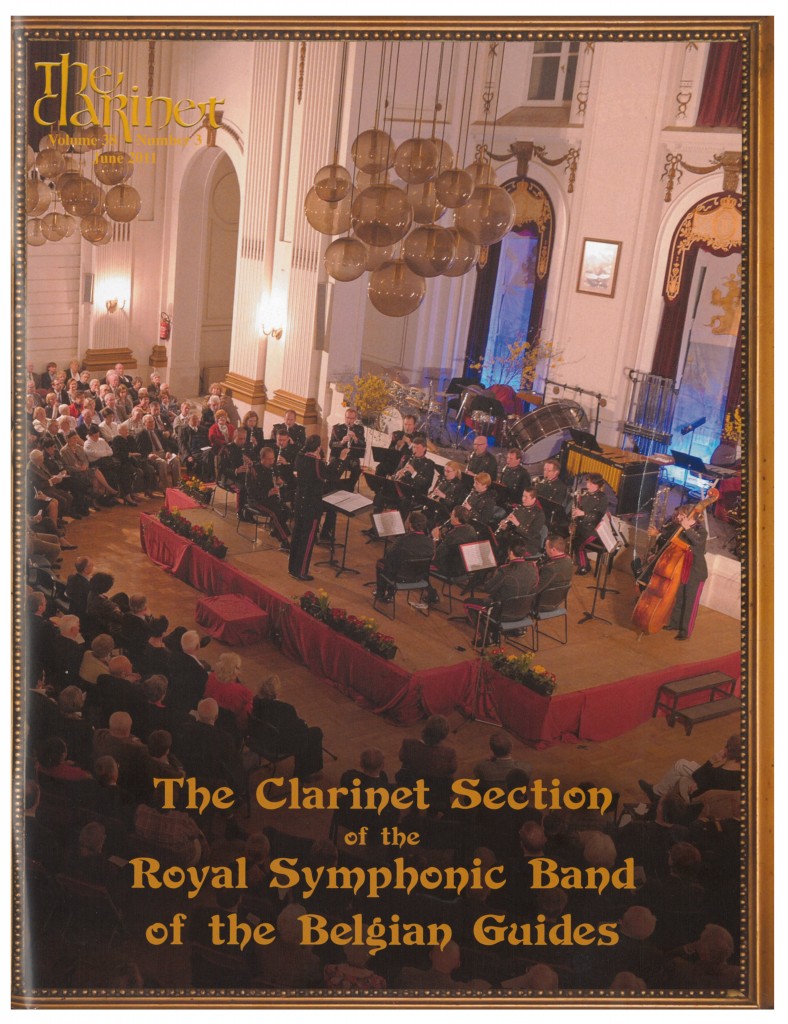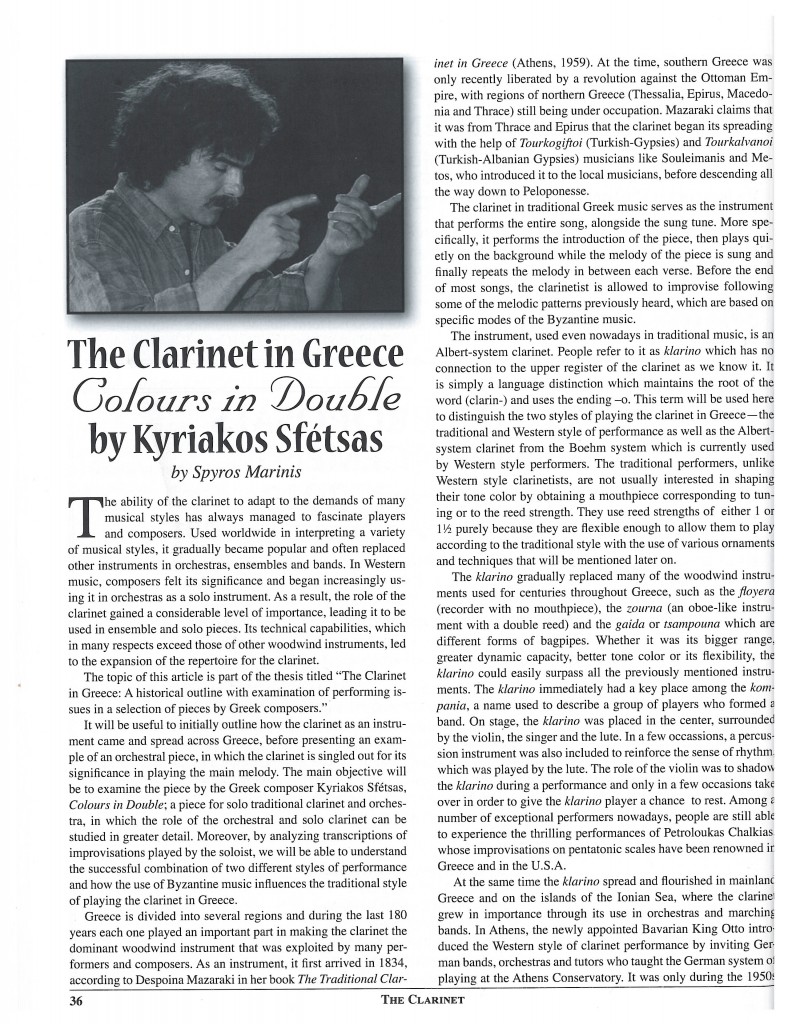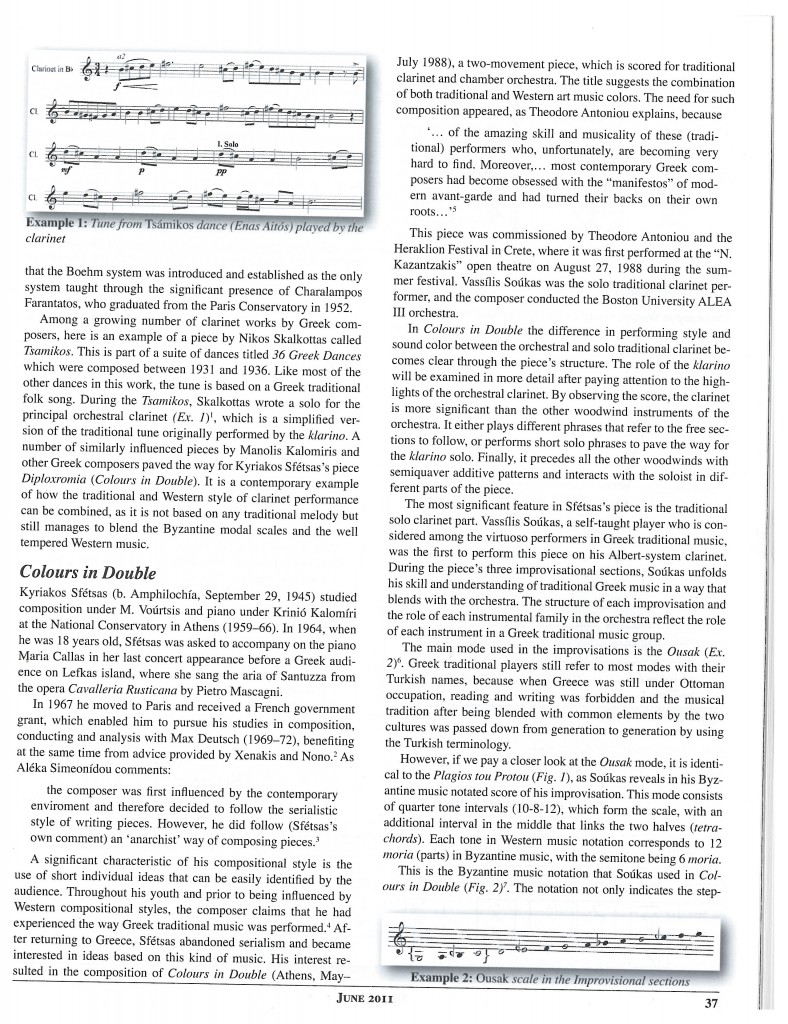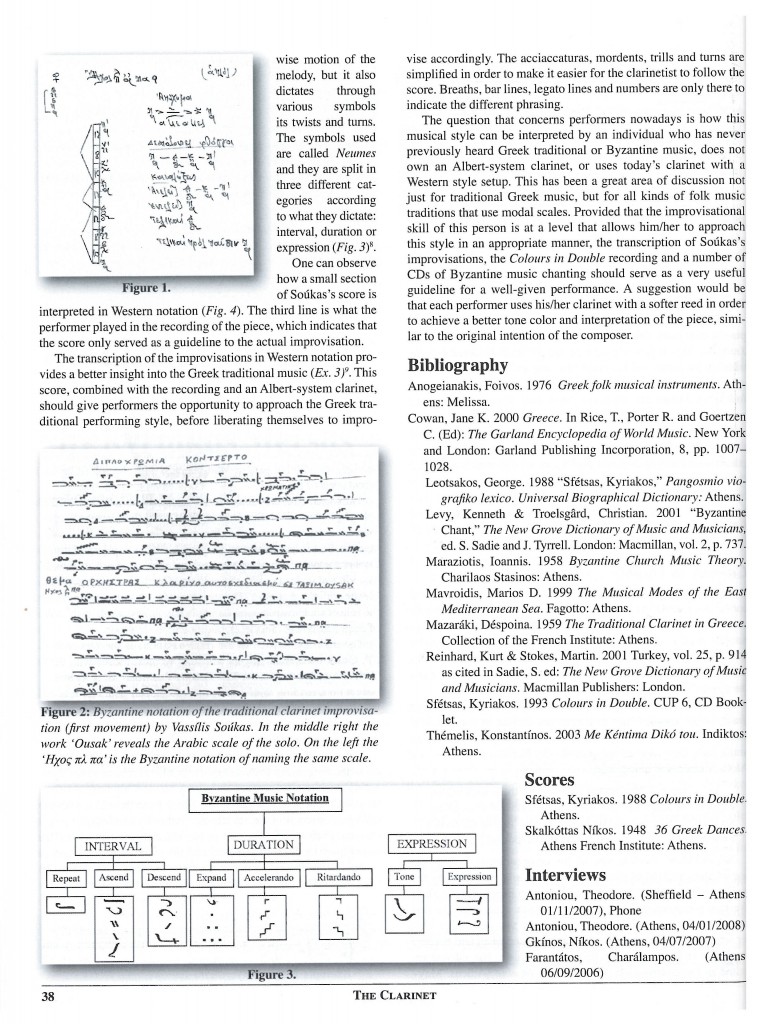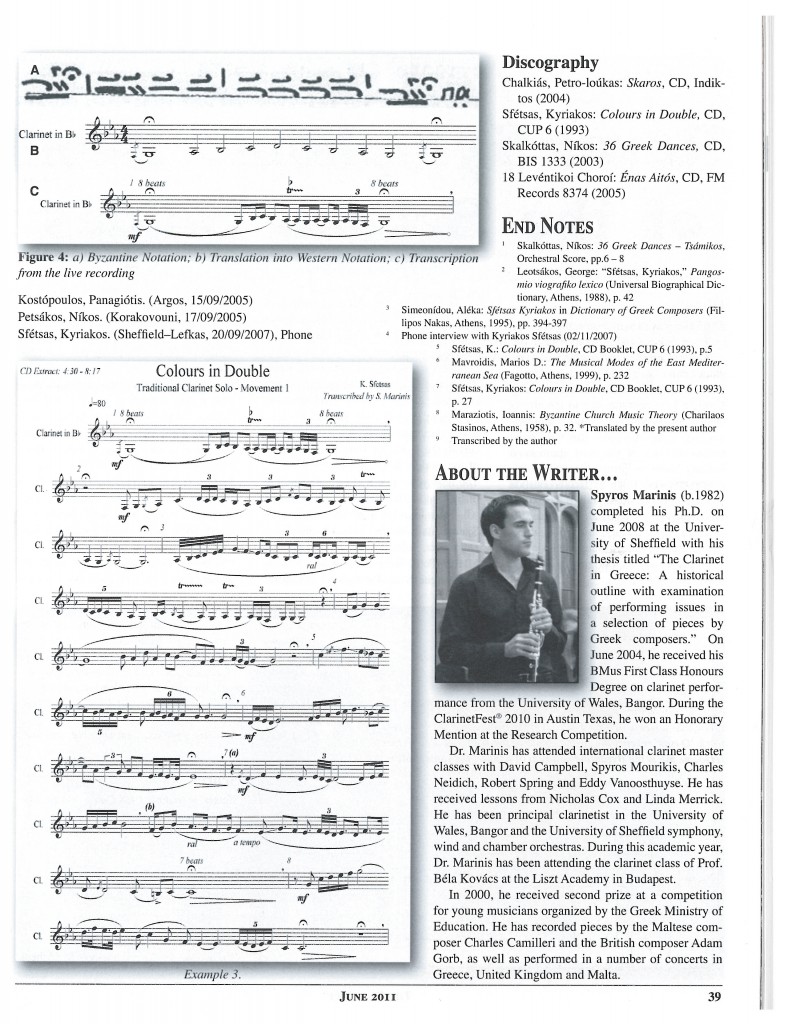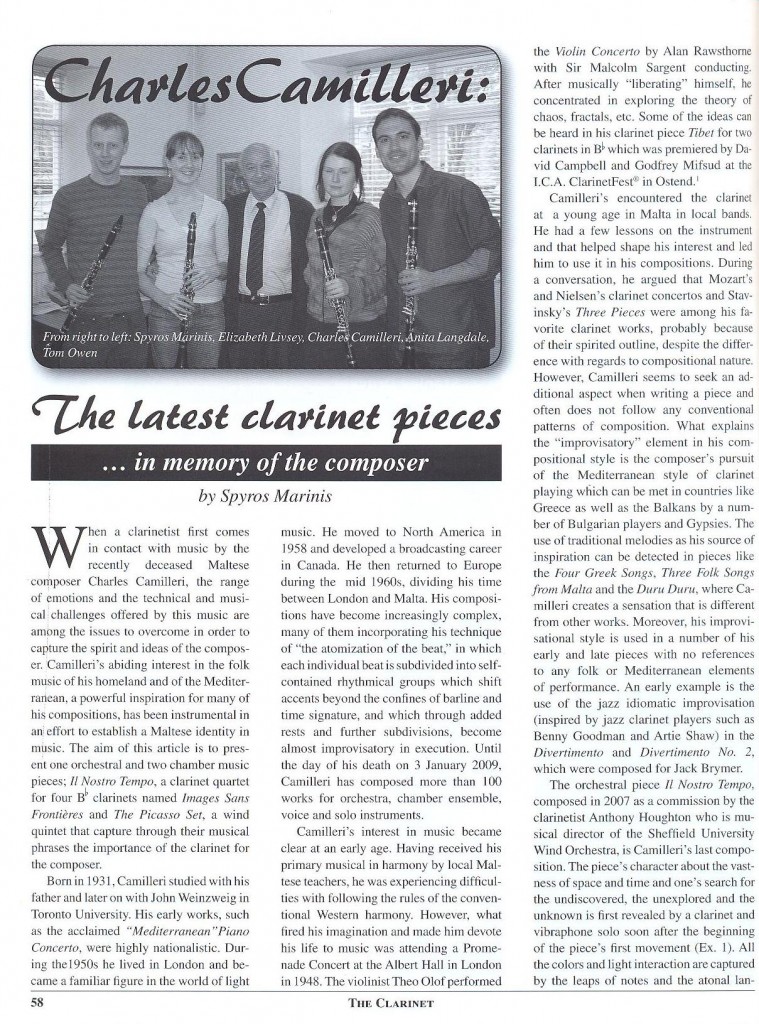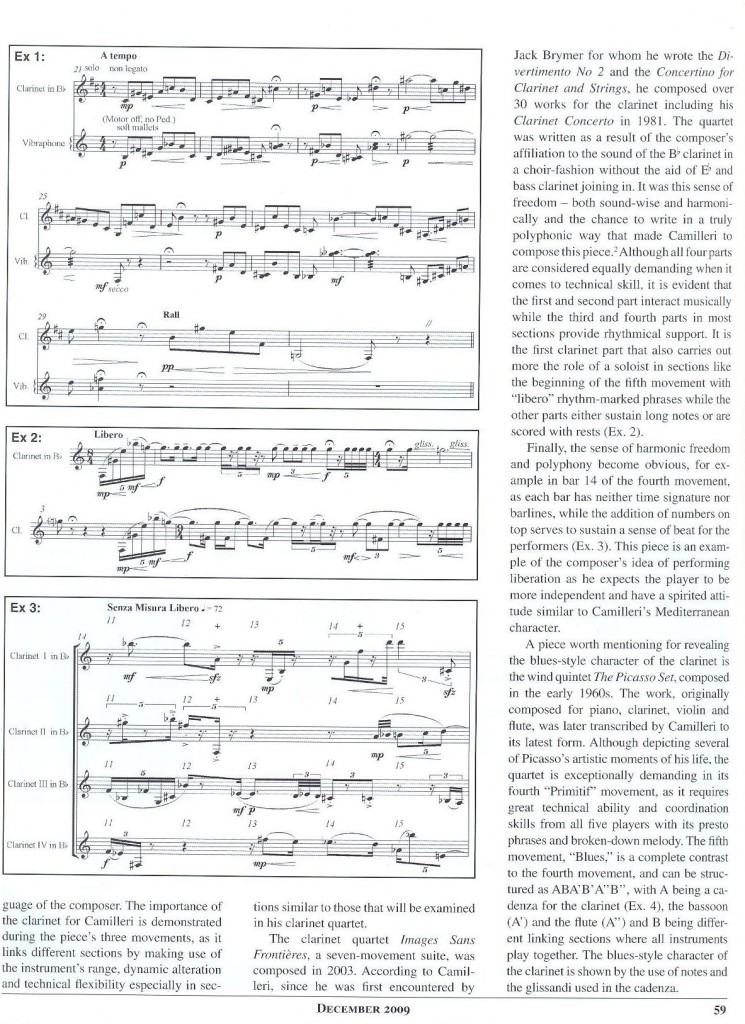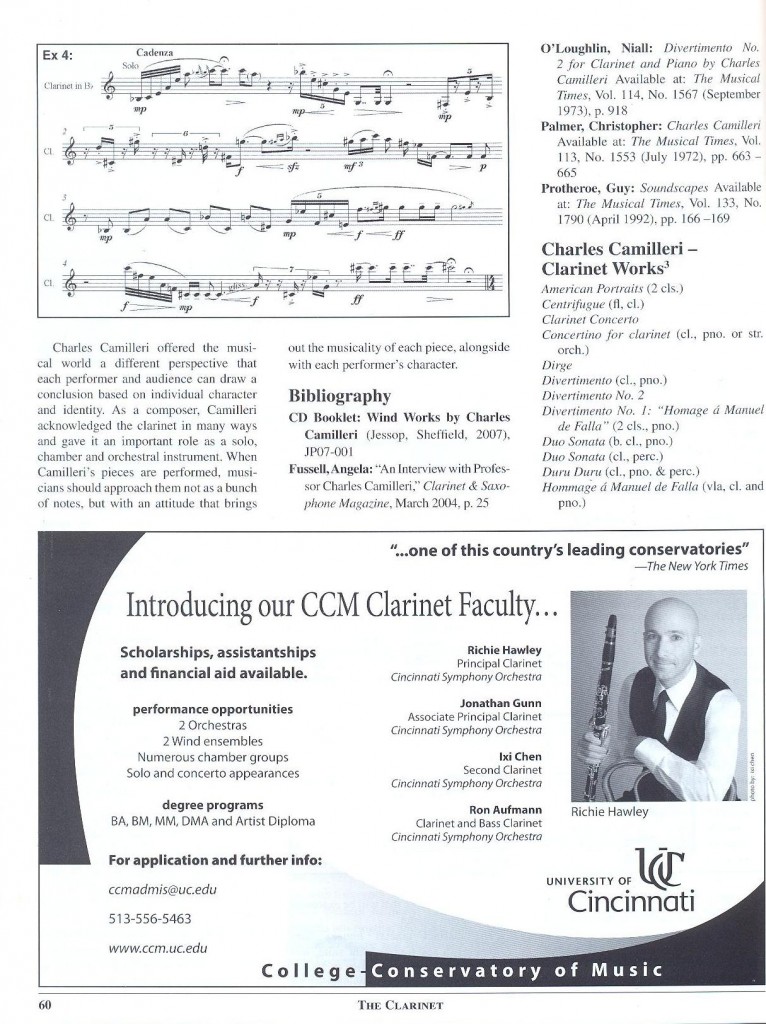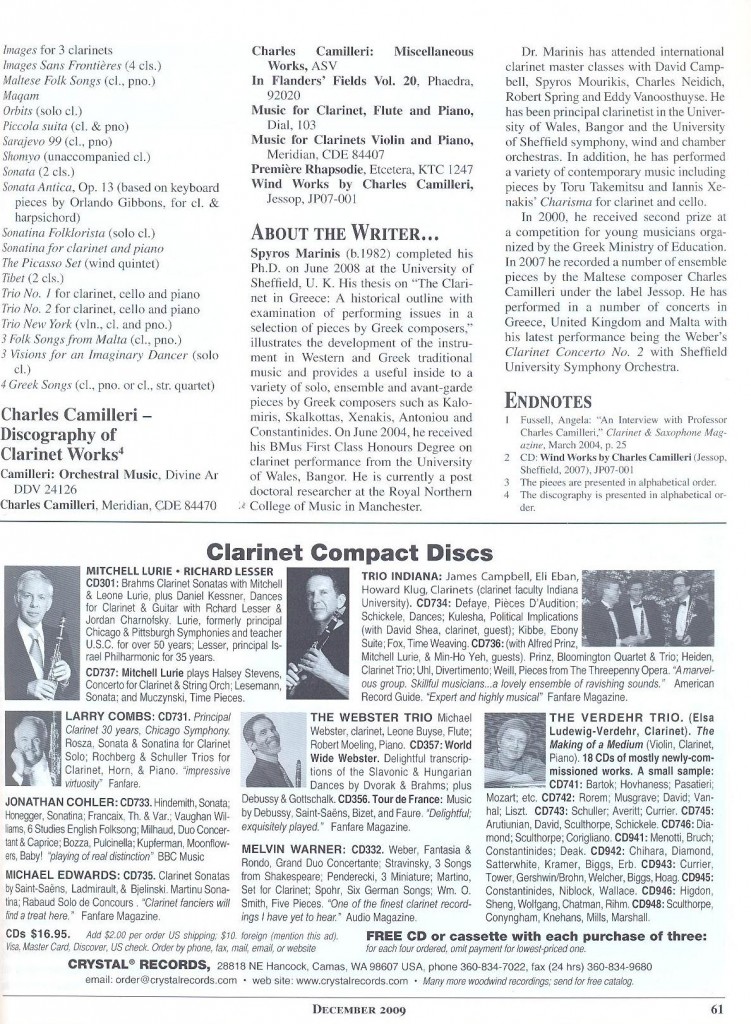Books
The Clarinet in Greece: A historical outline with examination of performing issues in a selection of pieces by Greek composers (University of Sheffield, Sheffield, 2008)
ABSTRACT
The ability of the clarinet to adapt to the demands of many musical styles has always managed to fascinate players and composers. Used worldwide in interpreting a variety of musical styles, it gradually became popular and often replaced other instruments in orchestras, ensembles and bands. In western music, composers felt its significance and began increasingly using it in orchestras as a solo instrument. As a result, the role of the clarinet gained a considerable level of importance, leading it to be used in ensemble and solo pieces. Its technical capabilities, which in many respects exceed those of other woodwind instruments, led to the expansion of the repertoire for the clarinet.
This thesis outlines the history of this instrument in Greece and examines its use in selected representative works. The clarinet is among the most popular woodwind instruments. In Greece, it arrived in the 1830s and it has been greatly involved in traditional and western-style music. As part of Greek traditional music, the clarinet flourished in mainland Greece. Simultaneously, the western style of clarinet performance was developed in the Ionian Sea Islands, and its significance since the mid nineteenth century has grown. Although the two styles do not share many common aspects, they happily co-exist.
Unlike the traditional clarinet, which was used primarily in folk ensembles, the western-style instrument was part of a number of wind bands and orchestras. As the First Greek National School of composers evolved, its members (e.g. M. Kalomíris, N. Skalkottas and P. Petrídis) commenced writing western-style orchestral pieces based on folk melodies. In music by Greek composers, the western-style clarinet was gradually established and elevated as part of the orchestra by playing in a more refined style the solo tunes of traditional music. Attempts have been made over the last decades to combine the two performance styles. Colours in Double by Kiriákos Sfétsas is an example of a piece for traditional solo clarinet and orchestra.
Nowadays, composers increasingly write pieces for the instrument, solo or in various combinations. This thesis examines a small selection of works for solo clarinet. 3 Likes by Theodore Antoniou and Charisma by Iannis Xenakis are chosen as representative examples of Greek clarinet avant-garde music. The solo piece by Antoniou (10 Fantasias for Solo Clarinet) and the piece by Dinos Constantinides (Fantasia for Solo Clarinet) are also discussed for their technical and musical aspects.
Articles
The Clarinet in Greece: Colours in Double by Kiriakos Sfetsas
The Clarinet Journal (vol. 38, no.3, pp 36-39)
June 2011
Colours in Double is a piece by the Greek composer Kyriakos Sfetsas for solo clarinet (Greek traditional performance style) and orchestra.
The aim of this publication is to address the combination of two performing styles (traditional Greek and orchestral) and how these two can interact in harmony using both scales and modes. All the above combined with improvisations on Byzantine modes, result in a piece that has a unique atmosphere.
Charles Camilleri: The latest clarinet pieces
The Clarinet Journal (vol. 37, no.1, pp 58-61)
December 2009
The article features Charles Camilleri, a Maltese clarinettist and composer and describes some of his music compositions. It presents three works of Camilleri, an orchestral piece titled “Il Nostro Tempo,” a clarinet quartet called “Images Sans Frontiers,” and the wind quintet, “The Picasso Set.” A brief history of Camilleri’s life, works, and achievements is also highlighted.
